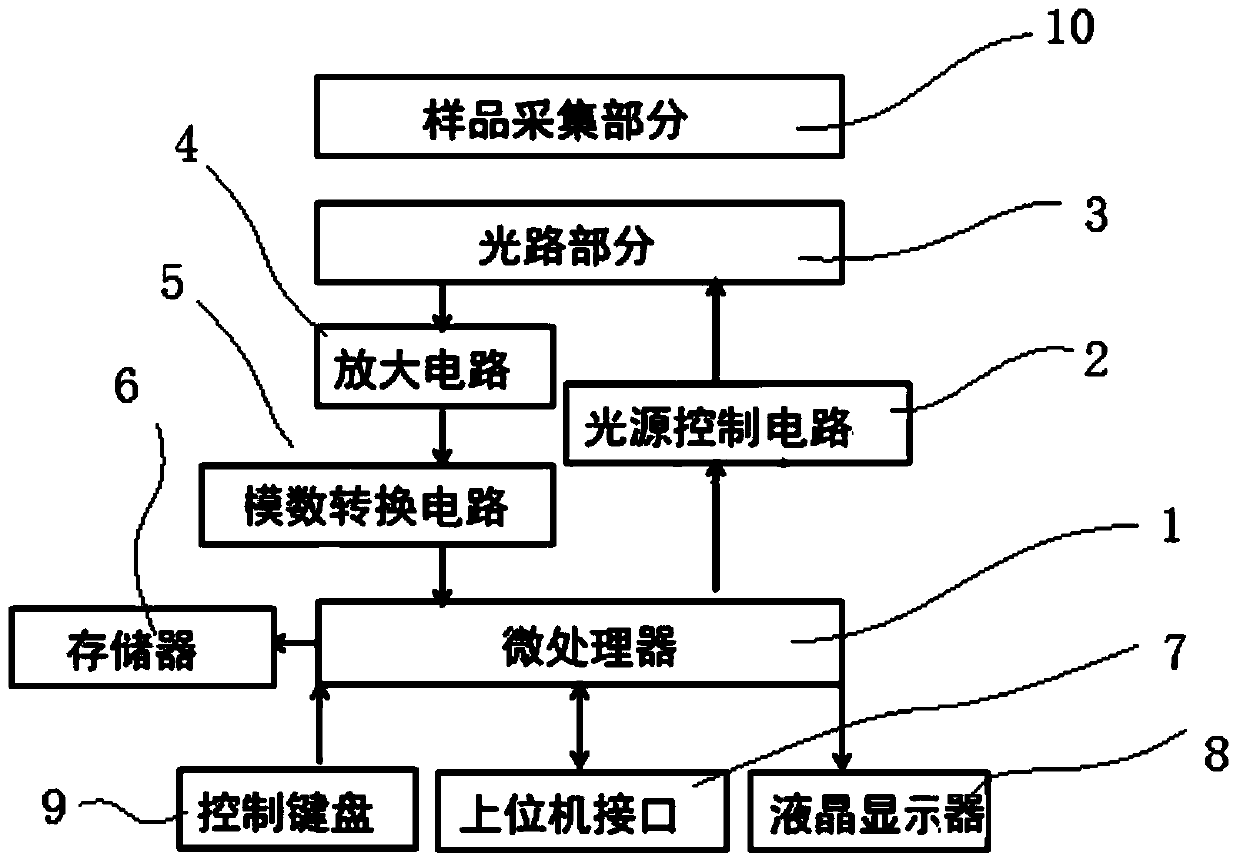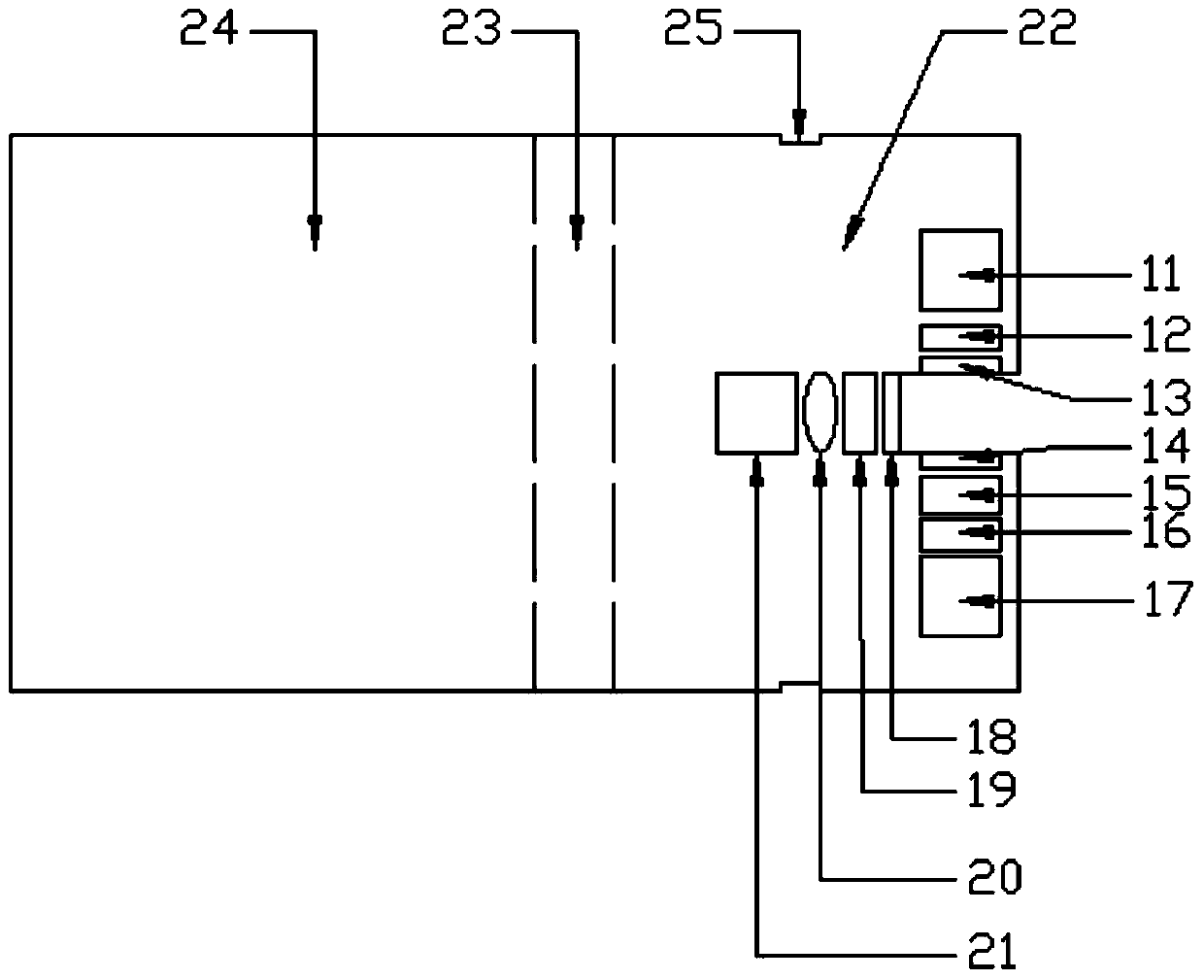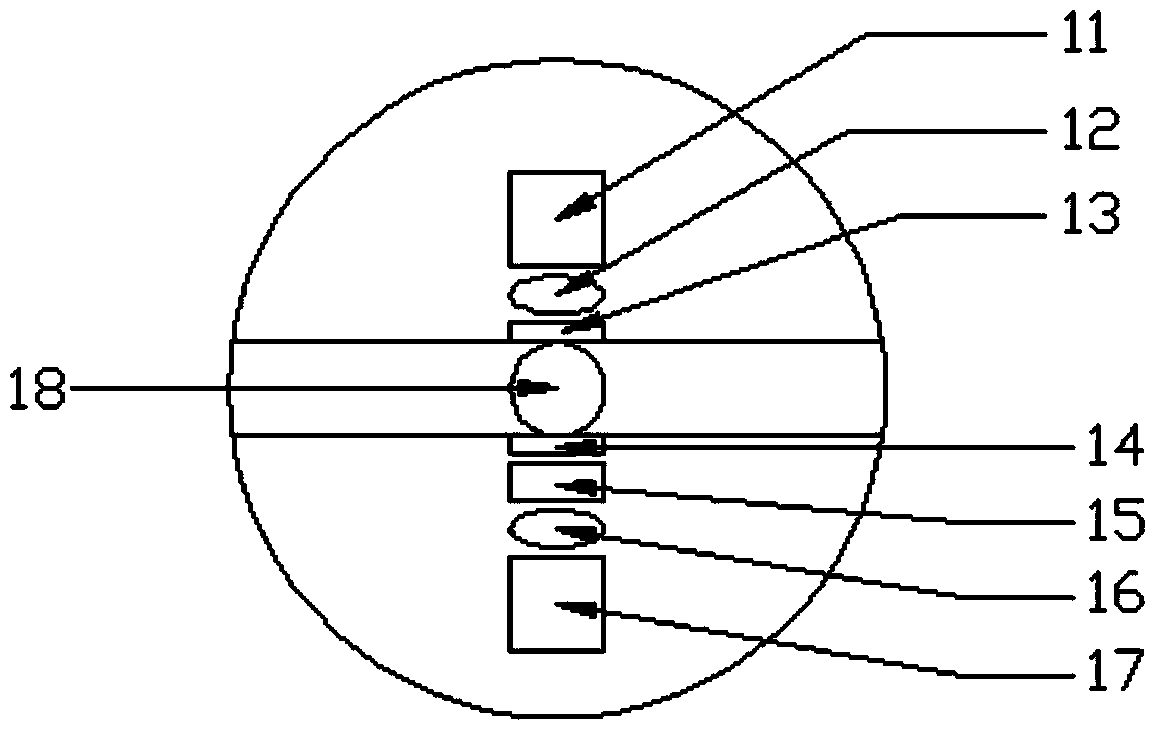Ultraviolet fluorescence double-signal water quality monitoring device taking LED (light emitting diode) as light source and application method of device
A technology for light-emitting diodes and water quality monitoring, which is applied in measuring devices, fluorescence/phosphorescence, color/spectral characteristic measurement, etc., can solve the problem that the fluorescence method is difficult to reflect the change of the total concentration of dissolved organic matter, and it is difficult to reflect the dissolved organic matter of proteins and humic substances Change trends and other issues, to achieve real-time monitoring of water quality changes, no need for digestion reaction time, and low energy consumption
- Summary
- Abstract
- Description
- Claims
- Application Information
AI Technical Summary
Problems solved by technology
Method used
Image
Examples
Embodiment 1
[0042] figure 2 with image 3 It is a structural schematic diagram of the optical path part of this embodiment. The LED light source 11 in the optical path part 3 is controlled by the light source control circuit 2 to emit ultraviolet light, which is collimated by the lens A12, passes through the quartz plate A13, and irradiates the water sample, and the unabsorbed ultraviolet light passes through the quartz plate B14 and the filter A15 is focused to the ultraviolet detector 17 through the lens B16; the fluorescence emitted by the water sample is focused to the fluorescence detector 21 through the quartz plate C18, the filter B19 and the lens C20. When the central wavelength of the LED light source selected for the LED light source 11 is less than 300nm, the ultraviolet detector 17 uses a wide-bandgap AlGaN-based photodiode, which has the advantage of not responding to fluorescence greater than 300nm, so the filter A15 can be omitted. The center wavelength of the LED light ...
Embodiment 2
[0053] Step 1. Collect the water body that requires online monitoring of wastewater from a printing and dyeing industry. Use a fluorescence spectrometer to scan the three-dimensional fluorescence spectrum. The scanning range is set to an excitation wavelength of 200-450nm and an emission wavelength of 280-550nm to confirm the center of the fluorescence peak. Typical printing and dyeing wastewater The three-dimensional fluorescence map of the secondary biochemical treatment effluent is as follows: Figure 7 As shown, there are 5 fluorescent peaks, the central positions of which are Ex230 / Em340, Ex280 / Em325, Ex250 / Em460, Ex310 / Em460 and Ex365 / Em460nm. According to the literature Wen-TaoLi, et.al., HPLC / HPSEC-FLD with multi-excitation / emissions can for EEM interpretation and dissolved organic matter analysis, 2013, Water Research, 1246-1256), the use of high performance liquid chromatography or size exclusion chromatography with multi-excitation or multi-emission fluorescence scan...
PUM
| Property | Measurement | Unit |
|---|---|---|
| wavelength | aaaaa | aaaaa |
| wavelength | aaaaa | aaaaa |
| wavelength | aaaaa | aaaaa |
Abstract
Description
Claims
Application Information
 Login to View More
Login to View More - R&D Engineer
- R&D Manager
- IP Professional
- Industry Leading Data Capabilities
- Powerful AI technology
- Patent DNA Extraction
Browse by: Latest US Patents, China's latest patents, Technical Efficacy Thesaurus, Application Domain, Technology Topic, Popular Technical Reports.
© 2024 PatSnap. All rights reserved.Legal|Privacy policy|Modern Slavery Act Transparency Statement|Sitemap|About US| Contact US: help@patsnap.com










